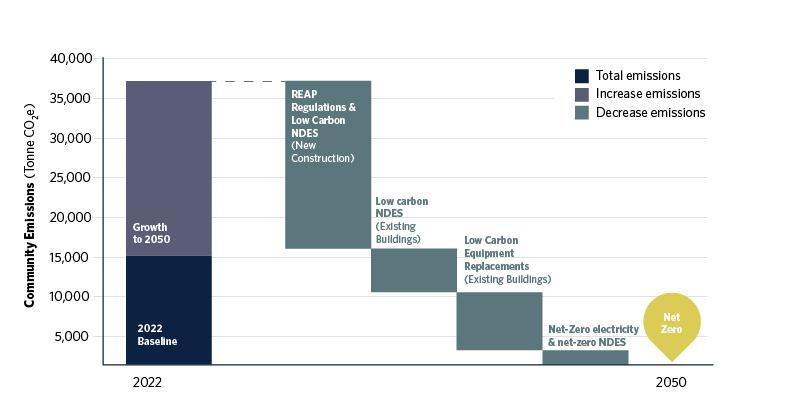Goal:
New and existing buildings achieve low carbon, energy efficient operations, incorporate low embodied carbon materials and design, and provide residents with safe and healthy homes that are resilient to the effects of climate change.
TargetsBy 2030, embodied carbon in new buildings is reduced 40% versus baseline building By 2030, at least 50% of homes have active, low carbon cooling increasing to 100% before 2050.
By 2035, building operational emissions are reduced by at least 60% from 2022 levels.
By 2050, all buildings in UBC’s residential neighbourhoods achieve net-zero operational |

Action Highlights
🟩 high impact mitigation 🟦 high impact adaptation
Selected key actions are summarized below. To see the full detailed list of actions, please refer to the NCAP action matrix located in the Documents and Resources page.
Actions in this scope area will also help deliver the following co-benefits:
• Affordability: reducing the costs associated with taking climate action
• Health & Wellbeing: improving health and wellbeing conditions for community members
• Access for All: making it easier for everyone to access spaces, information, processes, or programs
• Climate Leadership: highlighting where UBC is leading climate action policy
• Academic Connection: providing opportunity for research connections with UBC’s academic community
Actions You Can Take
|
Equity Considerations
|